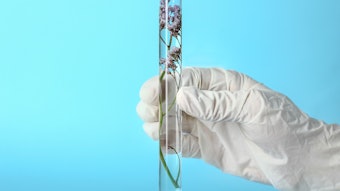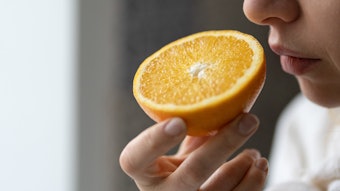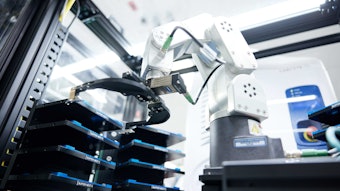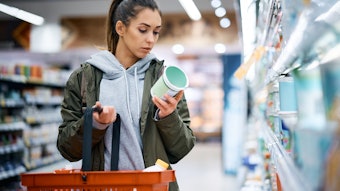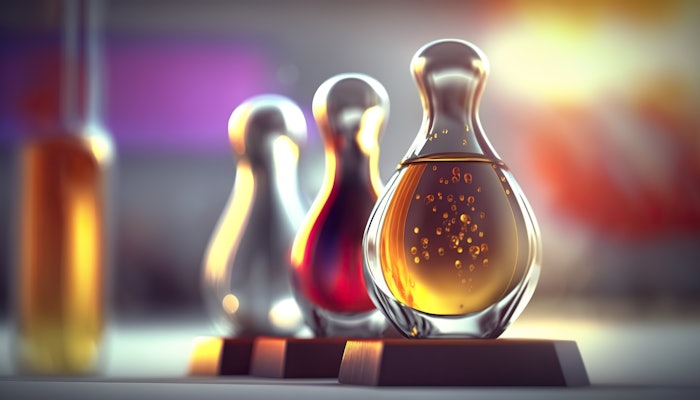
Upcycling, Leftovers, Repurposed, Rescued, Second Life, Recycled, Waste–regardless of its name, the latest sustainability initiative burgeoning within the fragrance industry is rejuvenating discarded petals, pods, kernels, peels, and wood.
Repurposed ingredients offer the advantage of reducing environmental impact, minimizing waste, fostering greater value in the supply chain and creating exciting new olfactive experiences for perfumers and consumers alike.
Read this article in page view in the Perfumer & Flavorist+ January 2024 Digital Edition.
Considering the fragrance industry's annual waste production is estimated at 92 million tons, even redirecting a portion of raw materials away from landfills can yield a substantial impact on environmental commitments.1
What is Upcycling?
The term 'upcycling' is credited to the German engineer Reiner Pliz, who in 1994 recognized the need to create a word reflecting the newfound value given to used or recycled items.2 The 2000s witnessed the term entering broader public consciousness, often in relation to repurposing used clothing or furniture. In essence, upcycling involves adding new value to something that was once deemed valueless or of little worth.
 By utilizing upcycled ingredients perfumers will have the opportunity to work with olfactive notes previously unexplored, amplifying creativity and expanding scent possibilities for consumers.Adobe Stock
By utilizing upcycled ingredients perfumers will have the opportunity to work with olfactive notes previously unexplored, amplifying creativity and expanding scent possibilities for consumers.Adobe Stock
Currently, there is no legal definition for upcycling, with each fragrance house describing its programs and efforts in similar yet compelling ways. Givaudan has been more specific by stating: “We classify an ingredient as upcycled if 50% or more of the carbon it contains originates from upcycled raw materials.”3 In practical terms upcycling, “[…]refers to either post-usage conversion or the use of production residues.”4
Upcycling Evolution: Packaging > Formulation > Fragrance
Packaging: Over the past decade, there has been a notable increase in the incorporation of waste materials in consumer goods packaging. The term ‘upcycled’ wasn’t widely used by brands, but customers became familiar with claims concerning the use of xx% post-consumer recycled material. The movement away from using virgin plastic has motivated companies to invest in materials such as upcycled milk caps and other non-plastic components, including durable bottles, which are becoming increasingly popular.
Formulation: Since 2016, we have witnessed a growing trend of formulations embracing upcycling and its associated ingredients. The launch of Upcircle’s facial scrub, crafted from repurposed coffee grounds, while not exclusively focused on fragrance, utilized a formulation ingredient with a powerful olfactive profile. The coffee ingredient subsequently became the distinctive signature scent of the product.
Companies dedicated to sourcing upcycled formulation ingredients are highlighting what’s available while simultaneously supporting a circular and transparent supply chain. The Upcycled Beauty Company has created a platform and its “[…]portfolio of actives & ingredients are made *entirely* from upcycled plant-based leftovers that are far too good to waste."5
Fragrance: Upcycled fragrance ingredients have existed for many years, as Thibaut Madre, Global Fragrance Innovation director at Takasago, explains, “Despite the common belief that we cultivate citrus fruits like oranges, lemons, or limes solely for their essential oils, it’s not economically feasible. In reality, these tangy fruits are primarily farmed to extract their refreshing juice. The industrial-scale juicing process inevitably leads to a significant surplus of pressed fruit residues - often referred to as 'skins', it's this so-called waste that harbors the essential oil. Without juice production on a big scale which results in ample availability of these residual skins, we wouldn't have a source sufficient enough for oil extraction. In essence, rather than being considered waste or an unwanted residue from juice manufacturing processes; these leftover citrus fruit skins are viewed more accurately as upcycled raw materials.”
 Originally, only the peel from the juice/fragrance industry was used in upcycling. However, now the residue from distillation, and even the utilization of the fruit itself, serves as a source of new olfactive molecules.7Adobe Stock
Originally, only the peel from the juice/fragrance industry was used in upcycling. However, now the residue from distillation, and even the utilization of the fruit itself, serves as a source of new olfactive molecules.7Adobe Stock
However, the active pursuit of new innovative methods to rescue old byproducts truly gained momentum with the introduction of the luxury fragrance 'I Am Trash' by Etat Libre d'Orange (2018). This marked a pivotal moment in the evolution of repurposed ingredients. It became the first product to showcase Apple Oil Orpura, a natural apple note, captivating consumers through its compelling branding and campaign, while simultaneously drawing global attention to fragrance upcycling. Developed by Givaudan, it utilized apple puree sourced from the juice industry, combined with rose petals and sandalwood chips distilled for a second time.6
We continue to see the trickle-down of upcycled concepts and ingredients to a broader range of mass brands, as consumers grow increasingly comfortable and familiar with the subject.
What Product Categories?
Here are some of the more common categories in which we’re seeing upcycling. Please note that the list is not exhaustive:
· Fine Fragrance
· Body Wash
· Body Care
· Dish Soap
· All-Purpose Cleaner
· Toilet Cleaner
· Fabric Conditioner
Common Upcycling Sources
Fragrance and ingredient suppliers are constantly exploring new upcycling sources, but the following are the most common:
• Power Industry
• Juice Industry
• Fragrance Industry
• Paper Industry
• Wood Industry
• Wine Industry
• Sugar Industry
• Chemical Industry
Popular Ingredients to Upcycle
The upcycled ingredients commonly utilized and highlighted on the packaging are those that are simplest to obtain, involve the fewest processing steps, and are the easiest for the consumer to understand.
· Citrus Notes (Orange, Bergamot, Lime, etc.): Originally, only the peel from the juice/fragrance industry was used. However, now the residue from distillation, and even the utilization of the fruit itself, serves as a source of new olfactive molecules.7
· Floral Notes (Rose and Jasmine): Suppliers are taking the exhausted petals from the first distillation and doing second extractions.
· Woody Notes (Cedarwood and Oakwood): Both the paper milling and barrel-making processes yield significant amounts of sawdust and offcuts. These byproducts now present a new opportunity for essential oil extraction.8
 Suppliers are taking the exhausted petals (rose and jasmine being the most popular) from the first distillation and doing second extractions.Adobe Stock
Suppliers are taking the exhausted petals (rose and jasmine being the most popular) from the first distillation and doing second extractions.Adobe Stock
Game-Changing Upcycled Ingredients
While all new creations are exciting, the upcycled ingredients that intrigue me the most are those that were previously only available synthetically, especially those derived from fruits and vegetables. These natural notes are now widely accessible, thanks to the use of puree waste from the juice and vegetable industries.
Maxence Moutte, Senior Perfumer at Givaudan reflects, "I was told for years that we were not able to have any natural fruit extracts on the palette because of technical issues, and here they are! This is truly innovative, and as a perfumer, I find it very exciting to be able to play with true-to-life natural fruit facets coming from waste to support my creations!"
Givaudan9,10
· Apple Oil Orpur
· Peach Alcoholate Orpurb
· Strawberry Alcoholate Orpurc
Symrise11
· Asparagus
· Cauliflower
· Leek
· Onion
aApple Oil Orpur is a registered trademark of Givaudan
bPeach Alcoholate Orpur is a trademark of Givaudan
cStrawberry Alcoholate Orpur is a trademark of Givaudan
Trends
Continual Creation - New Upcycled Ingredients: Developing innovative upcycled ingredients is a time-consuming and resource-intensive process for fragrance houses. It requires years to devise extraction methods and chemistries for natural ingredient development and creation. Success in this endeavor hinges on transparency and strong vendor relationships.
Given the significant investment involved, fragrance houses are likely to keep many new upcycled ingredients confidential, along with their exclusive methods. Of course, some ingredients will be shared with the wider public for claiming and conceptual purposes.
This period presents an exhilarating time to work in ingredient development and sourcing, as I anticipate that resources will continue to be dedicated to crafting new and exciting ingredients.
100% Upcycled Fragrances: Not only are we seeing products on shelves claiming one or two upcycled ingredients, but Firmenich has also launched its Circular Collection–“the only collection of 100 percent upcycled fragrances in the market.” 12 While not every brand will demand fragrance entirely sourced from upcycled materials, it presents an interesting challenge for perfumers to expand their creative horizons and create fragrance that is compelling to consumers.
Upcycling Challenges
Cost: Embracing upcycled ingredients presents an exciting opportunity, albeit not without its challenges, and among them is the issue of cost. Due to the uniqueness of these ingredients and the associated cost to develop them, they currently command a premium price. Nevertheless, as supply chains mature and the fragrance industry increases its investment, there is a glimmer of hope for a positive shift. With a potential increase in ingredient output, we can perhaps anticipate a gradual decrease in price, making sustainable choices more accessible.
Optics: The aspect of optics also poses a significant challenge, as the idea of waste or upcycled ingredients may not immediately resonate with consumers. There is a genuine concern that such products might evoke negative associations, leading to worries about potentially unpleasant or unappealing smells. To successfully navigate this, it becomes crucial to carefully craft the language surrounding the fragrance, consciously avoiding the use of the term 'waste.'
Greenwashing: Numerous brands are making significant strides in their sustainability initiatives. Still, there are those that engage in greenwashing and fail to bring about substantial changes. For consumers, upcycled ingredients offer a compelling way to discuss a positive environmental impact.
However, when brands incorporate only a single token upcycled ingredient or rebrand existing ingredients as rescued, it's disingenuous to suggest that consumers are making a meaningful impact with their product purchases. As previously discussed, most citrus essential oils are already obtained through upcycling. Thus, these 'conventional' ingredients don’t necessarily yield the positive impact one might expect from genuinely new rescued components. Incorporating 'new' ingredients that support emerging supply chains and innovative sourcing methods holds much greater significance in the fight to reduce our environmental impact.
 Any sourcing story used should be intuitively understandable, striking a balance between being informative without being overly technical to effectively engaged with the consumer.Adobe Stock
Any sourcing story used should be intuitively understandable, striking a balance between being informative without being overly technical to effectively engaged with the consumer.Adobe Stock
Storytelling: The utilization of ingredients sourced from waste often involves intricate processes, which can be challenging for consumers to fully comprehend. Explaining the journey from a pine tree to a vanilla fragrance lacks a clear and direct correlation, adding complexity to understanding the sustainable processes involved.13 As a result, brands such as Palmolive Up Body Wash or Ecover’s Too Good to Waste Multi-Surface Cleaner have found it easier to develop storytelling around ingredients with a clear correlation, like obtaining an apple fragrance from apple puree waste.
Any sourcing story used should be intuitively understandable, striking a balance between being informative without being overly technical. By doing so, we can effectively engage consumers and ensure they embrace the innovation and sustainability of these products without any hesitation or doubt. Ultimately, it's about presenting these concepts in a way that captivates and inspires, fostering a positive connection between consumers and the notion of upcycled ingredients.
Environmental Impact: Like any ingredient, it's important to keep in mind that the use of any essential oil has environmental consequences. The burden is significant due to the substantial quantities of plants required for oil production, the demand surpassing supply, the utilization of land and water, and the environmental footprint of transportation miles.
This isn't to suggest that we shouldn't use essential oils or their upcycled by-products, but we should be mindful that every choice we make has ramifications. Maintaining a balanced approach between synthetics and natural ingredients while investing in biotechnology will be crucial as climate change continues to advance and our ecosystems evolve. Engaging the public in understanding biotechnology, lab-grown ingredients, and technological processes will hopefully lead to positive outcomes as we strive to find a balance in the ingredients we incorporate within fragrance design.
The Future of Upcycling
In terms of fragrance creation, the practice of upcycling natural ingredients is here to stay. Finding new fragrance components that have distinctive olfactive characteristics offers fragrance suppliers a competitive edge while helping them achieve their sustainability goals.
Plastic Pollution: The future of upcycling lies in transforming abundant resources that pose problems for the planet into sources of new value. Notably, intriguing research is underway at the University of Edinburgh concerning plastic pollution. Scientists have engineered the E.coli bacteria to convert polyethylene terephthalate (PET plastic) into vanillin.14 This breakthrough has the potential to revolutionize the circular economy by converting pure waste into valuable new ingredients. This approach presents an alternative to using naturals as the foundation for upcycled components, showcasing the potential for plastic to become a novel carbon resource that yields valuable upcycled ingredients.
Carbon Capture: At the forefront of upcycling, carbon capture is the next frontier in formulation sustainability. “A bioreactor collects those emissions rather than dumping them into the atmosphere; bacteria eat the pollution and turn it into alcohol[…]."15 In 2023, Coty introduced a groundbreaking achievement by launching the fragrance "Where My Heart Beats," a new addition to Gucci's The Alchemist's Garden collection.16 This fragrance is a significant milestone as the first globally distributed scent crafted with 100% carbon-captured alcohol.
Like the process of transforming plastic into valuable commodities, the pursuit of generating fresh value from plentiful resources like carbon will remain a crucial pathway in the battle against climate change.
 Companies dedicated to sourcing upcycled formulation ingredients are highlighting what’s available while simultaneously supporting a circular and transparent supply chain.Adobe Stock
Companies dedicated to sourcing upcycled formulation ingredients are highlighting what’s available while simultaneously supporting a circular and transparent supply chain.Adobe Stock
Conclusion
As the marketing trend of upcycling fades, its advantages will persist, offering a greater chance to prioritize sustainability in the industry and amplify value throughout the supply chain. From a creative perspective, this is an exciting time as the upcycled ingredient sector is at the forefront of the next wave of innovation.
Perfumers will have the opportunity to work with olfactive notes previously unexplored, amplifying creativity and expanding scent possibilities for consumers. With "65% of consumers saying they want more environmentally responsible scents," according to fragrance company Firmenich, the industry is taking note and significantly changing how it operates.
As with everything, it’s a matter of striking a balance–avoiding excessive strain on the natural world through essential oils and upcycled ingredients, while also preventing an over-reliance solely on petrochemical-based synthetics. Thoughtful decision-making and mindful perfumery are principles that should continue long into the future, regardless of the ingredients.
References
1. Ollennu, A. (2022, November 3). Smells like green spirit: Why upcycled perfumes are the new fragrance trend. Metro. https://metro.co.uk/2022/11/03/smells-like-green-spirit-why-upcycled-perfume-is-the-new-scent-trend-17686458/
2. Aguileta de la Garza, F. (n.d.). What exactly is an upcycling collection and why are brands doing it? Elle Education. Retrieved August 22, 2023, from https://elle.education/en/business/what-exactly-is-an-upcycling-collection-and-why-are-brands-doing-it/
3. From leftovers to luxury: Pioneering upcycling in fragrances. (2023). Givaudan. https://www.givaudan.com/fragrance-beauty/pioneering-upcycling-in-fragrances
4. Goldfarb, S. (2021, July 30). Upcycling – the art of recycling plant matter. Blue Skincare. https://blog.blue-skincare.com/en/clean-beauty/upcycling/
5. Full Circle. (2023). Upcycled Beauty Company. https://www.upcycledbeauty.com/
6. Igneri, J. (2021, April 28). Are upcycled fragrances the next big trend in sustainable beauty? The Zone Report. https://www.thezoereport.com/beauty/upcycled-fragrances-sustainable-beauty
7. Givaudan Perfume. (2019, February 5). For the love of Bergamot, our perfumery school students visited the beautiful citrus fields in Italy. They also discovered the (Image attached) (Post). Facebook.
8. International Flavors and Fragrances. (2020, October 6). LMR Naturals by IFF: Oakwood France (Video). YouTube. https://www.youtube.com/watch?v=XDq15EJnJPQ
9. Givaudan Perfume. (2021, June 2). Our perfumers are excited about New Peach Alcoholate Orpur™, our latest, strategy-aligned ingredient created by upcycling juice side streams and (Image attached) (Post). Facebook. https://www.facebook.com/givaudanperfume/posts/our-perfumers-are-excited-about-new-peach-alcoholate-orpur-our-latest-strategy-a/1592064534325597/?locale=cs_CZ
10. Givaudan. (2023, August 3). Discover Strawberry Alcoholate Orpur™, Givaudan latest upcycled fragrance ingredient! Watch the video in which Perfumer Marypierre Julien and Natural Fragrance (Image attached) (Post). LinkedIn. https://www.linkedin.com/feed/update/urn:li:activity:7091743491336069121/
11.The new frontiers of naturals: Garden Lab collection enriches fine fragrances palette with five natural veggie ingredients. (2020, December 14). Symrise. https://www.symrise.com/newsroom/article/the-new-frontiers-of-naturals-garden-lab-collection-enriches-fine-fragrances-palette-with-five-natu/
12. Introducing Firmenich’s new circular fragrance collection. (2023). Firmenich. https://www.firmenich.com/fragrance/blog-article/scents-and-sustainability
13. Researchers develop a sustainable method for extracting vanillin from wood processing waste. (2020, June 3). Universitaet Mainz. https://phys.org/news/2020-06-sustainable-method-vanillin-wood.html
14. Bacteria serves tasty solution to plastic crisis. (2021, June 10). The University of Edinburgh. https://www.ed.ac.uk/news/2021/bacteria-serves-tasty-solution-to-plastic-crisis
15. Embleton, F. (2021, July 28). Slow scent - Upcycled fragrances are the new movement in sustainable perfume. Elle. https://www.elle.com/uk/beauty/a37113371/upcycled-perfume/
16. Coty launches world’s first globally distributed fragrance manufactured using 100% carbon-captured alcohol: Gucci, The Alchemist’s Garden, Where My Heart Beats Eau de Parfum. (2023, April 3). Coty. https://www.coty.com/news/coty-launches-worlds-first-globally-distributed-fragrance-manufactured-using-100-carbon-captured-alcohol

